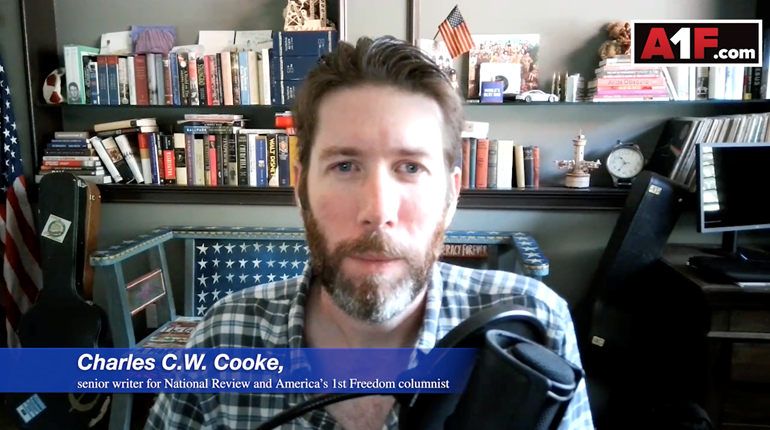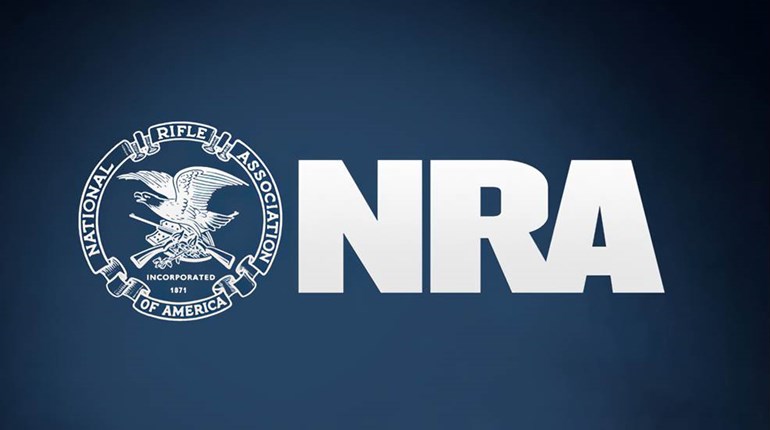
In 1975, the American Bar Association (ABA) adopted an utterly astonishing position as part of its official platform. It is “doubtful,” the ABA proclaimed that year, “that the Founding Fathers had any intent in mind with regard to the meaning of” the Second Amendment.
This bears reflecting upon for a moment, lest its enormity go unappreciated. Within the last half-century, the preeminent legal organization in the United States—an organization that plays an integral role in deciding whether aspiring judges are sufficiently qualified for the nation’s courts—held within its catechism that one of the core provisions within the U.S. Bill of Rights meant nothing of consequence and could therefore not be meaningfully enforced.
Does the ABA think Founding Fathers like James Madison and George Mason simply dropped the Second Amendment into the mix for fun?
Did the people who demanded, debated and then ratified the U.S. Bill of Rights simply allow arbitrary nonsense to be thrust into the middle of the nation’s charter?
Or did the ABA think that perhaps the Second Amendment’s meaning had been lost in the mists of time, like so many burned books at Alexandria?
If so, one wonders what the ABA made of the scores of contemporary observers and jurists who had no problem whatsoever comprehending and explaining what the amendment meant, grounded by words such as “the people” and “the right to keep and bear arms shall not be infringed.” Did they choose to simply ignore the fact that the Second Amendment protects an individual right had been commonly understood in America since before the Revolution.
It is possible that we will never know the answers to these questions about the ABA’s motivations. Indeed, it is likely that they are flatly unanswerable, because the ABA’s purpose back in 1975 was not to engage in a serious inquiry into the meaning of the U.S. Bill of Rights, but rather to obfuscate that meaning and thereby smother it.
In this endeavor, the ABA was not alone. Reading the Second Amendment out of the U.S. Constitution was fashionable on the American Left at the time. The textbooks of the era did so, as did the lion’s share of the universities; the media establishment did so, as has long been its wont; an alarming number of politicians and representative organizations did so; and, having been poisoned by the pernicious idea of “living constitutionalism,” many of America’s judges went along with the ruse, too.
By the time the 1980s rolled around, alarmed Americans began to realize they were witnessing the airbrushing of their history. It was with this fake history in mind that The New York Times’ Adam Liptak said there is an “almost complete scholarly and judicial consensus that the Second Amendment protects only a collective right of the states to maintain militias.” This preposterous, conspiratorial position did not pass the smell test even then.
Today, that position is being swept to the margins. Eighty percent of Americans understand that the Second Amendment protects an individual right, and those who purport not to believe this struggle to explain what they can possibly mean by their alternative interpretation. Many of the dominant legal textbooks have been updated to explicitly acknowledge the Second Amendment protects an individual right—including books written by professors who covet stricter gun control. And, most important of all, the U.S. Supreme Court has avoided being sucked into the revisionist hole. In 2008, the court confirmed the self-evident proposition that “the right of the people to keep and bear arms” means the right of the people to keep and bear arms.

It is impossible to overstate the scale and the importance of the work that President Donald J. Trump and U.S. Senate Majority Leader Mitch McConnell (R-Ky.) have done on this lattermost front to ensure the continuing integrity of the Second Amendment. It’s impossible to overstate just how precariously the right to keep and bear arms hung in the balance until they did that work. There was an extremely good reason that the U.S. Senate chose to pull out all the stops in 2016 in its successful attempt to block the progress of any of President Obama’s U.S. Supreme Court nominees, and that was that the majority of senators understood that it would take just one more “living constitutionalist” justice to bring an end to the legal protection of the right to keep and bear arms in America. Its leading lights may occasionally pretend otherwise in the pages of The New York Times, but the American gun-control movement knows full well that the Second Amendment is not going to be removed from the U.S. Constitution by the outlined amendment process, and, in consequence, it knows that its only hope of imposing the sort of the draconian restrictions that are plainly outlawed by the text is to engineer a revision within the courts. By holding out for a nominee who was acceptable to the majority in the U.S. Senate, McConnell managed to shut off the threat of such a revision for at least a decade.
And then, le déluge. Since the last general election, President Trump and Sen. McConnell have not only succeeded in stopping the rot, they have been altering the character of the judiciary in precisely the opposite direction. Again: This was not assured. Even after Heller had ostensibly put the question to bed in 2010, President Obama spent six years appointing judges whose conception of the right to bear arms has a lot more in common with the ABA’s conception than with James Madison’s, so that, by 2014, defenders of the U.S. Constitution were in despair at the damage that had been done.
In 2020, by happy contrast, it is the “living constitutionalists” who are gnashing their teeth. They understood the opportunity they had, and they understand that it has been taken away. It was a national disgrace that there were four votes for the “collective rights” dissents in Heller and McDonald. It is a national triumph that the court has been kept closed to anyone who agreed with those dissents.
There really is no less dramatic way of putting it: As a result of the nomination and confirmation of Justices Gorsuch and Kavanaugh, the chances of an activist U.S. Supreme Court overturning either D.C. v. Heller (2008) or McDonald v. Chicago (2010)—as opponents of the right to keep and bear arms openly and triumphantly promised that they would during the election of 2016—is lower than it has been in a long time. For now, those who wish to repeal the Second Amendment will have to take that case to the people and to the states.
Better still: For the first time in a decade, the U.S. Supreme Court seems to be open to taking on new Second Amendment cases, thereby bringing a welcome close to the drought that had come to infuriate and frustrate Justices Clarence Thomas and the late Antonin Scalia.
If a right delayed is indeed a right denied then between 2010 and 2016 the Second Amendment was at serious risk of becoming a right in name only—or, as Justice Thomas put it, a “second class right.” For a long time, no action seemed to kindle the Court’s interest: Not “assault weapons” bans; not concealed-carry restrictions; not the prohibition of standard-issue magazines. Heller was crystal clear in its central holding, but it left a lot to be subsequently fleshed out. That fleshing out will hopefully be done soon by the U.S. Supreme Court.
And that’s just at the national level, for Justices Gorsuch and Kavanaugh are just two of the nearly 200 new judges that, as this was being written, President Trump and Sen. McConnell shepherded onto the federal benches. The remaking of the lower courts has received a lot less attention than the fights over control of the U.S. Supreme Court, and yet, in many ways, it is set to prove just as important as the consolidation of an originalist majority in Washington, D.C.
Why? Well, because it is the lower courts in which the vast majority of the nation’s Second Amendment cases are heard in the first instance, and therefore it is the lower courts that are tasked with doing most of the work enforcing the decisions that the U.S. Supreme Court has handed down.
During the Obama years, gun owners were routinely frustrated by the dangerous combination of radio silence from the U.S. Supreme Court and studied impudence from the country’s lower courts—many of which took the U.S. Supreme Court’s reluctance to get involved as an opportunity to pretend that the Heller and McDonald decisions had never happened at all. In Washington, D.C., Chicago, California, New Jersey and elsewhere, millions of American citizens ended up feeling as if they had no meaningful recourse when their constitutional rights were violated. It was the U.S. Supreme Court or nothing. It will take a little while to filter through, but before long, this too should change.
And yet, as ever, this is no time for complacency. In 2016, defenders of the Second Amendment got a reprieve, and, in time, that reprieve became the stirrings of a judicial restoration. But, to borrow from Winston Churchill, there is a difference between the beginning of the end, and the end of the beginning, and the end of that judicial restoration lies a long way off in the distance.

The U.S. Supreme Court is 5-4 in favor of an original reading of the right to keep and bear arms, but it is not 6-3 or 7-2 or 8-1 in favor of an original reading of the right to keep and bear arms. The lower courts are being flipped away from “living constitutionalists,” but they are not being flipped so lopsidedly as to make flipping them back impossible to achieve. And, perhaps most important of all, the ambitions of the anti-Second Amendment players have in no way subsided.
Hillary Clinton ran explicitly against Heller in 2016; since that time, her party has become more, not less, radical on the question. Who can doubt that a couple of bad elections would prove deleterious to liberty?
What President Trump, Mitch McConnell and the team at the Federalist Society have done during the last three years is both remarkable and unprecedented. Americans, as Thomas Jefferson observed, enjoy the “peculiar security” that comes from “the possession of a written constitution,” and they therefore deserve jurists who will decline to “make it a blank paper by construction.” With this president and this Senate, that is exactly what we are getting.
The position taken by the ABA in 1975 sounds like a long time ago, but we could be back there all too fast—with judges who don’t judge, and courts that don’t read and the towering height of America’s legal establishment insisting until it is blue in the face that two and two make five and that the plain words beneath the highest law in the land actually mean nothing intelligible at all.


































